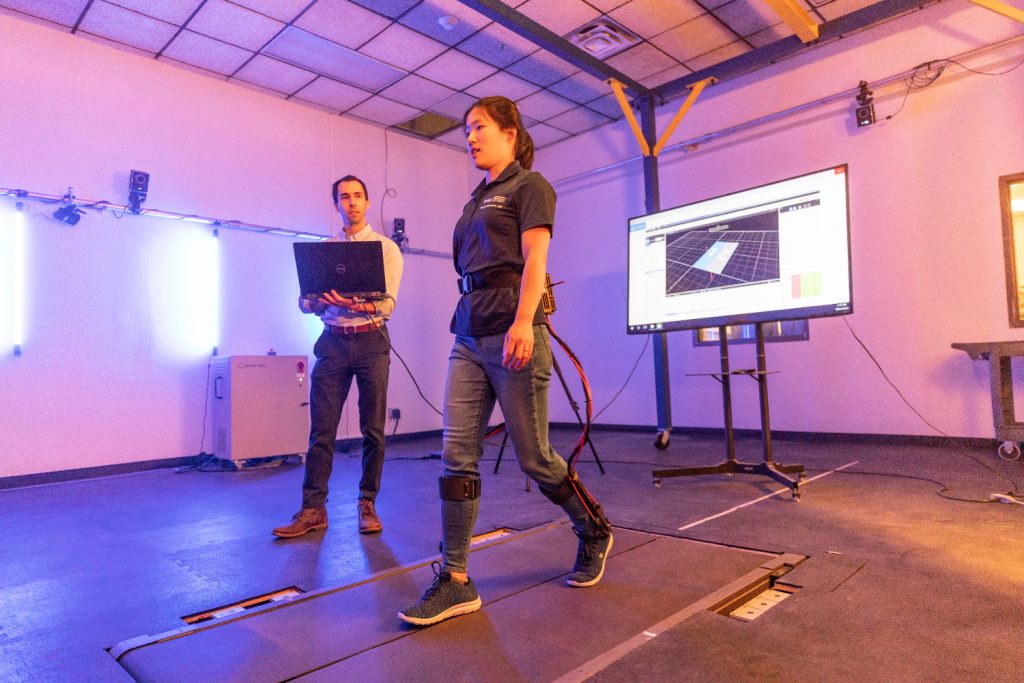From self-driving cars and assembly lines to smart home hardware and mechanically assisted surgery, robots are rapidly becoming an intrinsic part of everyday life. When the world revolves around sensors, motors and electrical machines, having a steady stream of engineers ready to deploy and further develop this technology is critical.
The U.S. Bureau of Labor Statistics projects demand for mechanical and robotics engineers will increase at a faster rate than average by 2032, particularly due to robotics being introduced to a variety of manufacturing, aeronautics and healthcare fields, especially in Arizona.
In response to the need for versatile and innovative professionals proficient in all things automation, the College of Engineering, Informatics, and Applied Sciences (CEIAS) introduced the Mechatronics and Robotics Engineering (MRE) program in fall 2023. This four-year degree program offered by the Mechanical Engineering department trains students to apply mathematical and engineering principles to develop and operate complex robotic systems for a range of practical uses.
Robots and co-bots
Robots have been used in manufacturing, logistics and space exploration industries for years, but now they play a major role in medicine, entertainment, military, travel and even home life. With technology revolutionizing every aspect of trade and human operation, the stage is set for the next generation of engineers to upgrade as well.
“Many industries already deploy co-bots, which are robots that work alongside humans to perform testing and assembly, and their adoption will only increase across industries, hence the need for properly trained engineers to design, integrate and program them,” said Department of Mechanical Engineering Chair Constantin Ciocanel.
CEIAS leadership saw the potential of strengthening the engineering workforce in Arizona, home to a swath of major operations in computer development, aviation and materials science. The economic power of Arizona’s “Silicon Desert” of tech companies and projects called for a focused, inventive bachelor’s degree equipping graduates with the expertise necessary to thrive in the state’s growing robotics industry.
Program faculty lead and associate mechanical engineering professor Zach Lerner sought to answer that call.
“The MRE program is important for bolstering the Arizona workforce because it equips graduates with interdisciplinary skills in mechanical and electrical engineering and computer programming, which are essential for modern industry advancements,” Lerner said. “Arizona is experiencing significant growth in high-tech industries such as aerospace, defense, medicine and advanced manufacturing, and this education addresses the current skills gap those industries are now seeing, making our graduates highly valuable.”
So far, seven NAU students have declared MRE as their major. The department is continuing to recruit students to this new program and anticipates it will grow as more high school students learn about it.
Like a well-oiled machine
CEIAS created a program unique from existing engineering degrees, where students will dive deeper into the fundamental principles of mechanical, electrical, software, instrumentation and controls engineering. With ample time and resources dedicated to each of these concepts, graduates will seamlessly integrate into high-paying job opportunities in various sectors, from consumer electronics to automotive design.
The MRE curriculum emphasizes intensive and comprehensive hands-on experience. Students pursuing the degree will participate in a variety of lab assignments where they learn to build and test robots and the associated software using state-of-the-art equipment. Individually and in team environments, students will work to explore and solve real-world engineering problems, completing their studies with a senior capstone project.
In addition to hands-on instruction, Lerner expects MRE students will have extensive internship opportunities working side by side with industry leaders. Robotics majors are also actively participating in faculty-led research projects on drones, uncrewed aerial vehicles (UAVs, or drones), wearable robots, robotic arms, exoskeletons, artificial muscles and machine learning.
For junior Daniela Hernandez, the mechatronics program served as a cure for coding burnout and a way to build on her software engineering background. Since joining Lerner’s first Introduction to Mechatronics course, Hernandez has used mechanical and electrical engineering to troubleshoot real-world mechatronic scenarios and program robots for a range of objectives.
While exploring the MRE curriculum’s one-of-a-kind courses, Hernandez said the program has helped her confirm she wants to use her future robotics expertise to make a difference.
“When I heard about the mechatronics program, I knew it would be the perfect career for me,” Hernandez said. “I get to use what I learned in my past studies but continue growing academically with new subjects. It is my dream to continue blending electrical, mechanical and software engineering to expand on what is already accessible today as well as make everyday people’s lives easier with the use of technology.”
For more information on the MRE program and the Department of Mechanical Engineering, visit nau.edu/mechanical-engineering.
Ava Hiniker | NAU Communications




